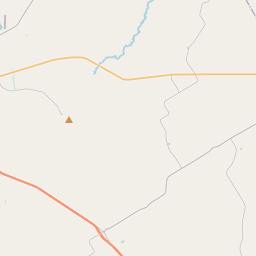Bull Hill Cemetery
Historical marker location:






This graveyard, one of the oldest in Falls County, was used for the interment of African Americans for more than a century. James Coryell, an Anglo frontiersman killed in 1837, may be on of the earliest burials. Bull Hill became the burial ground for the enslaved African Americans from the Churchill Jones plantation. Jones arrived in 1849 from Conecuh County, Alabama with nearly 60 enslaved African Americans and established a 28,000 acre plantation encompassing the former Sarahville de Viesca settlement. After emancipation, African American freedmen from the China Grove community continued to use Bull Hill to inter their deceased. The cemetery is one of the surviving vestiges of the China Grove community. About 1880, members of the Bailey, Broadus, Curry, Johnson, Mozee, Paul, Sneed, Stokes, Taylor, Tomlinson and Travis families formed this vibrant Freedman's community. Community members established the China Grove African Church, later renamed the China Grove Baptist Church, and built a school for their children. Many enslaved African Americans were brought to this area from Alabama by the Jones, Tomlinson and Stallworth families. Newly freed African Americans often remained in the area working as tenant farmers. Several families acquired land and some started businesses. The last burial in Bull Hill was in 1961. Recent archaeological, archival and oral historical research has helped reconstruct and preserve its history. Archaeology has confirmed oral history testimony stating there were more than 100 burials in Bull Hill. Grave marker materials include native stone, brick, concrete, marble, granite, metal and wood. Today, Bull Hill Cemetery remains a hallowed place and a vital link to the area's rich African American heritage. Historic Texas Cemetery - 2009
As one of the most visible programs of the Texas Historical Commission (THC), historical markers commemorate diverse topics in Texas history, including: the history and architecture of houses, commercial and public buildings, religious congregations, and military sites; events that changed the course of local and state history; and individuals who have made lasting contributions to the state, community organizations, and businesses.
The cattle industry played a significant role in the development of Texas, with cowboys driving cattle from Texas to railheads in Kansas during the late 1800s and early 1900s.
In the early 19th century, European settlers began to arrive in Falls County, drawn by the fertile soil and abundant natural resources. The county was officially established in 1850, and the town of Marlin was designated as the county seat. The development of railroads during this period further spurred the growth of the region, allowing for easier transportation of goods and people.
During the Civil War, Falls County, like many other parts of Texas, heavily supported the Confederacy. The economy revolved around agriculture, especially cotton plantations, which relied on enslaved labor. However, the war brought multiple challenges to the county, including shortages of supplies and soldiers, as well as occasional conflicts with Union forces.
In the post-war era, Falls County faced a period of rebuilding and diversification. The reliance on cotton continued, but other industries such as livestock ranching and oil extraction began to play a significant role in the county's economy. Over the years, Falls County has gone through various changes and challenges, but it remains a vibrant community with a rich history tied to the land and its people.
Falls County Timeline
This timeline provides a concise overview of the key events in the history of Falls County, Texas.
- 1837 - Falls County is established by the Republic of Texas
- 1838 - The county seat is established in Perryville
- 1850 - Marlin becomes the new county seat
- 1861-1865 - Falls County residents serve in the Civil War
- 1873 - The Houston and Texas Central Railway reaches Marlin
- 1886 - The town of Lott is incorporated
- 1896 - The Marlin Female Institute is established
- 1910 - A serious cotton boll weevil infestation hits the county
- 1921 - The infamous Klan trials take place in Marlin
- 1953 - Falls County dedicates a new courthouse
- 1975 - Marlin State Hospital is designated a National Historic Landmark
- 1996 - The Marlin Democrat newspaper celebrates its 125th anniversary
- 2018 - Falls County celebrates its 180th anniversary